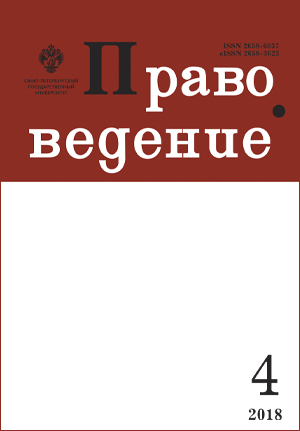The admissibility of control over the cutting of greenery on private land plots — existing problems and prospects for regulation
DOI:
https://doi.org/10.21638/spbu25.2018.401Abstract
This article examines the mechanisms for controlling the cutting of greenery on privately owned land plots. The authors begin the study by determining the status of green spaces, elements of their private law and public law regime. According to the authors, the current Russian legislation does not have a universal mechanism for controlling the cutting of greenery located on land plots that allows for the preservation of separate categories of greenery. The authors explore how the possibility of regulating the control of cutting green spaces on privately owned land plots was influenced by the “evolution of property rights,” including under the influence of the concept of sustainable development. According to the authors, the possibility of introducing such control at the legislative level requires the balancing of two human rights: property rights and the right to a favorable environment. The authors pay special attention to regulating the control of cutting greenery on private lands that exist in the United States, which, on the one hand, is due to the concept of the United States as a stronghold of “classical liberalism,” and on the other hand, the existence of a developed land management system in the US. The authors investigate the existing control mechanisms for felling green spaces located on privately owned land plots in the US: local cutting regulations, zoning institute, and the special institute “conservation easements.” The authors demonstrate that in the United States, regulation of control over the cutting of green spaces located on privately owned land plots differs substantially between states, and leads to widespread public debate, the existence of which is caused by different opinions in answering the fundamental question: does land belong to the current generation or is it in trusted management for future generations. The authors explore the public trust doctrine in the United States, suggesting that the government should be seen as a trustee for managing natural resources, with fiduciary responsibilities in regards to the public. In conclusion, possible options for amending the current legislation are given to introduce the necessary control over the cutting of green spaces located on land plots in private ownership.
Keywords:
green spaces, ownership, felling of green spaces, sustainable development, fiduciary duties, public trust
Downloads
References
Downloads
Published
How to Cite
Issue
Section
License
Articles of "Pravovedenie" are open access distributed under the terms of the License Agreement with Saint Petersburg State University, which permits to the authors unrestricted distribution and self-archiving free of charge.




